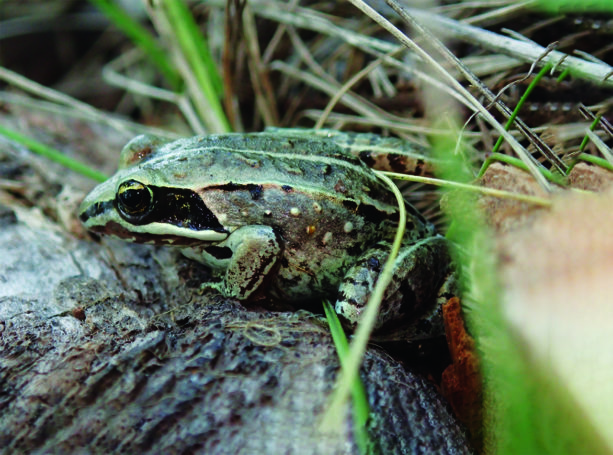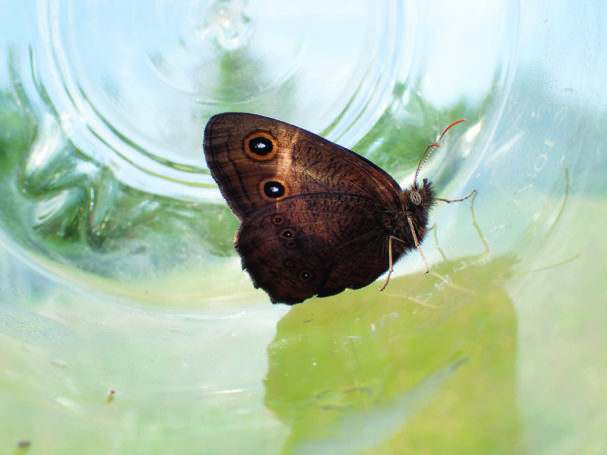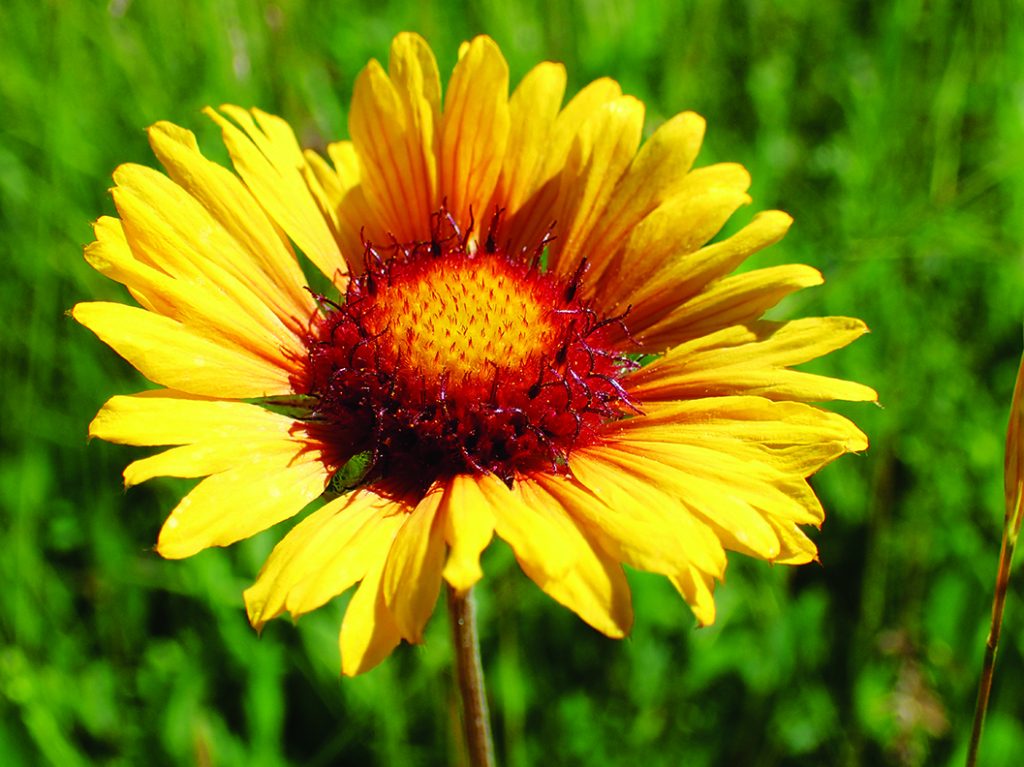Kevin Stewart shows how small actions can evolve into greatness
Small things make a difference, and if you need proof, consider how Kevin Stewart — a legally blind photo enthusiast who is on a mission to save a patch of aspen parkland — won the Nobel Peace Prize.
Well, sort of.
It’s a bit of an involved story, but it starts in Rwanda in 1994, with a silverback gorilla killed by a landmine.
A zoology graduate from the University of Alberta at the time, Stewart’s eyes were turned towards environmental concerns and activist efforts. The death of a gorilla half a world away inspired him to action. He turned himself into an authority, digging up information and newspaper clippings in those early-Internet days.
“This was me, staying up late at night and doing the research. Because somebody needed to do it,” he recalls.
Inspired by the gorilla’s plight, he co-authored a 1999 article entitled “Animal Casualties of the Underground War.” He was the “amateur researcher in Canada” interviewed by the New York Times in 2001. And he joined the International Campaign to Ban Landmines activist group.
“I was developing a feeling of empowerment, that I was actually doing something,” Stewart says about those years. “Especially in November of ’97, when I got an email from Jody Williams. It was kind of a bulk email to everyone, going ‘Congratulations, we’ve won’”— he pauses for a beat —“‘the 1997 Nobel Peace Prize.’”
The International Campaign to Ban Landmines and its co-ordinator, Vermont-based Williams, were joint winners of the prize.
It was a turning point, a huge affirmation of the power of small actions. But it coincided with another turning point, in which Stewart was literally losing sight of small things.

LOSING SIGHT, GAINING VISION
In the mid-’90s, Stewart’s eyesight began changing. He was diagnosed with Stargardt disease, an untreatable genetic disorder, and within little more than a decade, his vision had deteriorated past 20/200, the point of legal blindness.
The 52-year-old picks up a magazine, flips it open and draws it toward his face. “I can see the words riiiiiggggght abooouuuuut now,” he exclaims, the glossy pages almost touching the tip of his nose.
This demonstration happens in an Edmonton coffee shop, where we’ve met to talk about the Vegreville Creek and Wetlands Fund that he started in August 2018 with Edmonton Community Foundation (ECF). It’s another little project he hopes will grow into great things.
His resolve to protect his hometown area of Vegreville is partly influenced by Edmonton’s Little Mountain controversy of 1999, when 42 acres of natural aspen parkland were bulldozed despite widespread public outcry and efforts to save it. Says Stewart: “We don’t want what happened to Little Mountain to happen in these places.”
The area also means a great deal to Stewart because that’s where he discovered the joy of seeing the beauty of nature through photography.
He opens a photo album, its pages filled with extraordinary close-ups of tiny creatures — flies, snails, butterflies and more. He took the photos, with infinite patience and the macro setting of his auto-focus Olympus, while tramping through an area he calls Pussytoes Spring, near Vegreville.
Stewart can’t see what his camera has captured until he opens the full-screen images on his computer. Then, he says, “I can actually see the details. Like, really see the details.”
Stewart contributed $2,506.25 — seed money, if you will — to set up his emerging fund with ECF. According to donor adviser Noel Xavier, this type of fund has 10 years to grow to $10,000, through contributions and compounding interest. At that point, it can begin granting funds to support its cause.
Xavier says emerging funds are proof that small actions have big impact.
“A lot of people think, ‘Oh, an endowment fund. Well, I’m not rich,’” he says. “But when we say ‘You’ve got 10 years to get it to $10,000,’ that makes it a lot more manageable and achievable for people.”

PROTECTING VULNERABLE LANDSCAPES
In this case, the funds would go to the Edmonton Area Land Trust (EALT) to cover stewardship costs associated with protecting two natural areas: a wetland on the southwest edge of Vegreville, and Pussytoes Spring, 100 acres of undisturbed aspen parkland that Stewart dreams could become a butterfly sanctuary.
Pam Wight, the executive director of EALT, applauds Stewart’s fund, calling it a very important step to protect land in perpetuity.
Aspen parkland is a transition zone between boreal forests to the north and grasslands to the south, stretching from southern Manitoba to north-central Alberta.
“This is the most fragmented type of ecosystem in Alberta,” says Wight. “The central parkland area is used up by agriculture or urban areas … and there’s very little native habitat left, relative to other ecosystems.”

CREATIVE GIVING
With ECF’s help, Stewart’s fund has an online giving page, making it easy for anyone to contribute. Stewart, meanwhile, is busy dreaming up ways to supplement the donations — a “Bottles for Butterflies” bottle drive, or maybe an adopt-a-critter campaign that uses his photographs.
On the online giving page, Stewart talks about speaking for the trees, a line from the 1971 Dr. Seuss book, The Lorax.
At the end of The Lorax, the Once-ler drops a single Truffula tree seed into the hand of a boy who listened to his story. “Unless someone like you cares a whole awful lot, nothing is going to get better. It’s not,” Seuss wrote.
Stewart is clearly someone who cares. A lot.
